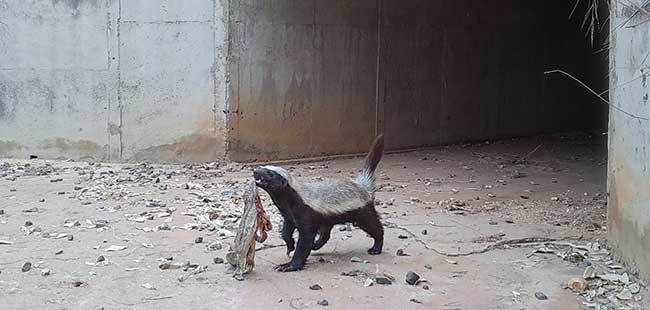Wildlife and
transport
Project
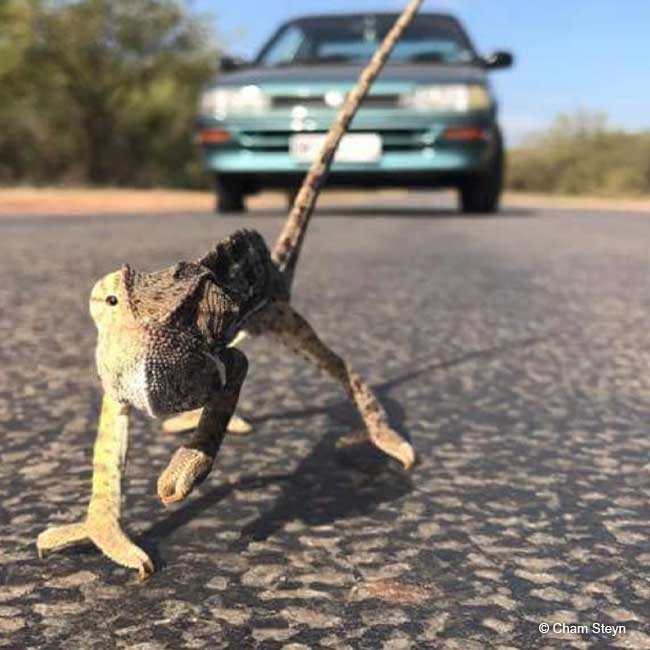
Wildlife-vehicle collisions seriously impact wildlife populations and are dangerous to vehicle occupants. The Endangered Wildlife Trust is the only African organisation with a dedicated project focusing on transport and wildlife interactions. The project has been incorporated into the National Biodiversity and Business Network Program due to the clear role of industry and policy. The project works across South Africa and collaborates on similar projects with colleagues worldwide. Our goal is to reduce the impacts of transport infrastructure on wildlife and vice versa. We focus on improving our understanding of the threats to wildlife from transport activities and infrastructure and identifying solutions suitable to the southern African context.
Transport-related impacts on wildlife
Animals and people are in danger of being struck by vehicles on roads and railway tracks daily. Almost all drivers have accidentally collided with an animal, be it a butterfly, a bird, or larger animal, like a kudu. Wildlife-vehicle collisions can seriously impact wildlife populations and are also dangerous to vehicle occupants. Habitats and communities are also divided by transport networks such as roads and railway lines. But, these are essential for our socio-economic development through travel and tourism, and the transport of food and goods. We must, therefore, find solutions to reduce the impact of transport infrastructure on people and wildlife without hindering our transport sector.

Transport infrastructure’s impact on wildlife and vice versa
Transport networks are critical to the development of society and the economy, which means that network construction will likely keep increasing for the foreseeable future, particularly in Africa. Transport infrastructure has numerous diverse, and mostly negative, consequences for biodiversity and ecosystem functioning. These include habitat destruction and degradation, fragmentation and disruption of wildlife populations, and direct impacts from vehicles colliding with wildlife. Secondary impacts include the spread of alien plant species or increased human access to previously remote natural resources.
The Endangered Wildlife Trust’s National Roadkill Database for South Africa shows that mammals are the most commonly-reported roadkill (50%), followed by birds (18%), reptiles (6%), and amphibians (1%), with 24% of species being unidentifiable. Large mammals, such as carnivores and antelope, are likely to cause damage or delays to trains, and vehicles. Collisions with animals can be expensive with insurance claims suggesting that approximately R82.5 million is paid yearly against vehicle collisions with wild animals.

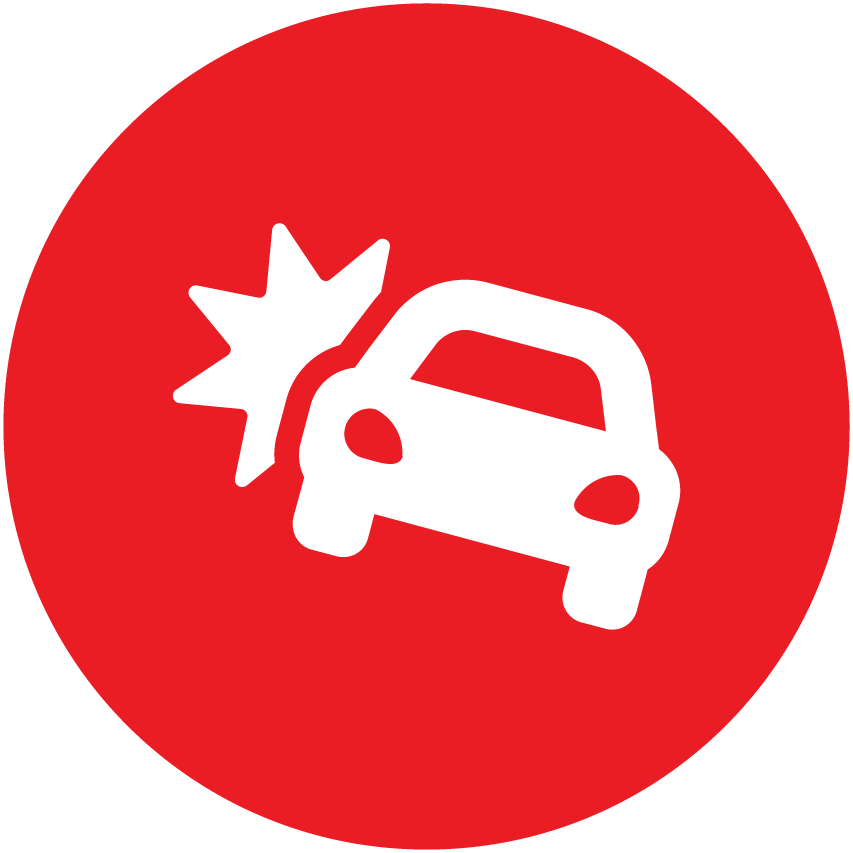
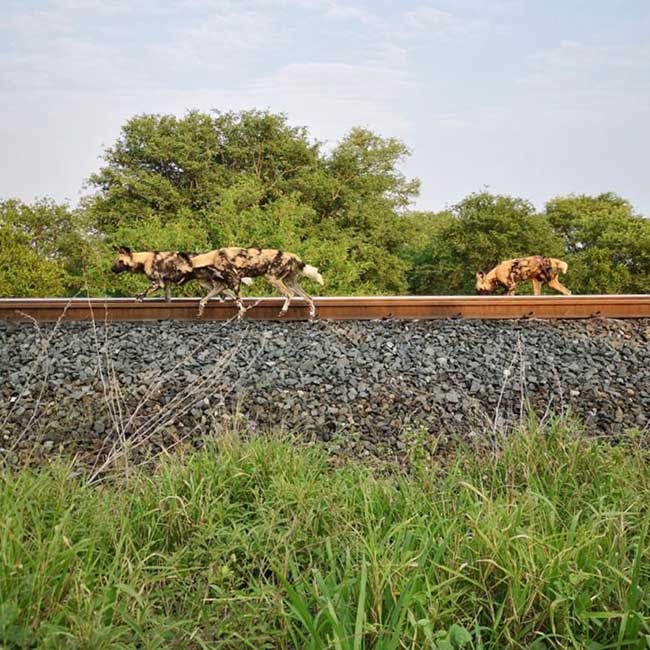
wildlife interactions with transport infrastructure
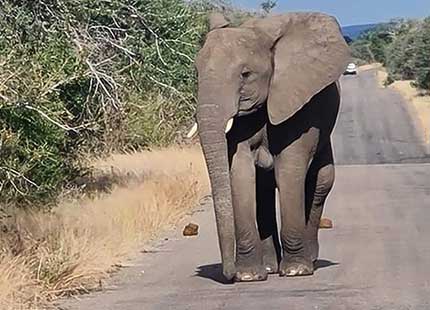
Roads
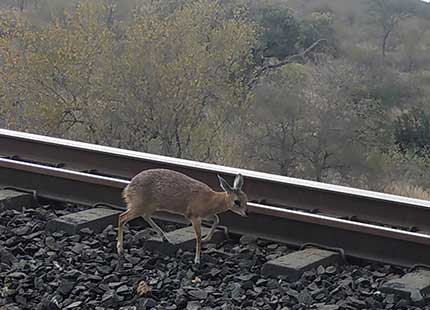
Railway
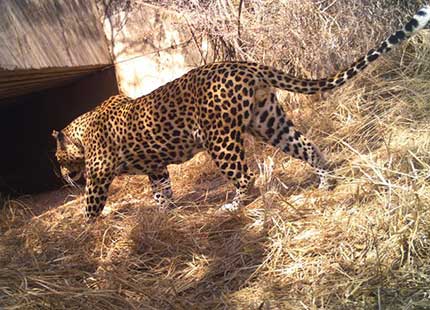
Culverts
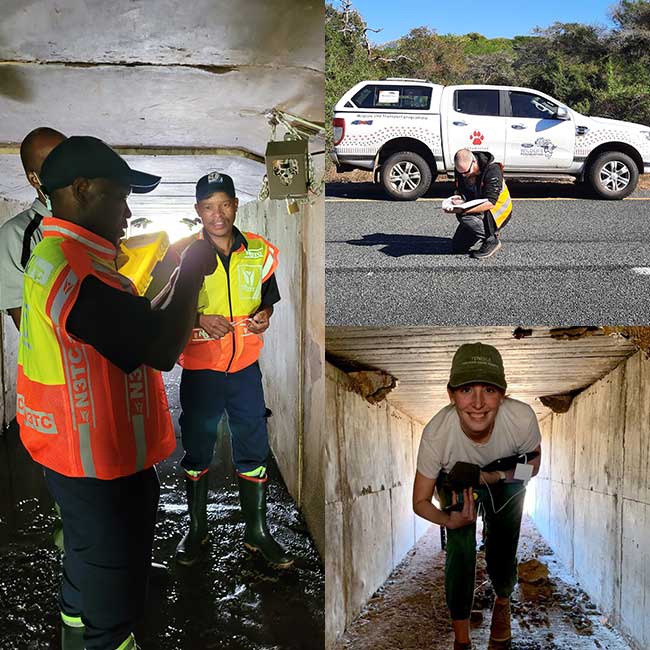
How we reduce these impacts on wildlife
The science of road and rail ecology is relatively well established in North America, Europe, and Australia, but is fairly new in Africa. Road and rail ecologists aim to understand the threats to wildlife from transport activities and infrastructure and are developing solutions to reduce these threats.
By collecting and analysing wildlife collision data, we look for patterns and trends in road- and railkill. We identify areas with high collision rates, the times of day, season or year when specific animals are killed on roads or railway lines, and what other factors contribute to these incidents. Once we understand where and why collisions are happening, we implement mitigation measures such as installing road signs or temporary fencing. For example, Giant Bullfrogs (Pyxicephalus adspersus) emerge from the ground with the first heavy rains of summer and migrate to nearby breeding grounds in their thousands. Unfortunately, many are killed on roads during the migration season. Recognising these patterns, timelines, and hotpot areas, we can focus on reducing the roadkill levels within that timeline by erecting temporary structures, such as fencing, to divert the frogs to cross safely by using culverts beneath the road.
Another key aspect of our work is raising driver awareness of roadkill hotspots and how to avoid colliding with animals.
Driving global collaboration and research
Much of our work depends on research. We, therefore, work with universities to support students studying road and rail ecology. This way we facilitate knowledge exchange, gather more information, and generate further support. To achieve this we have partnered with three of South Africa’s toll concessionaire companies to train their staff to report wildlife incidents and identify species hit by vehicles on their routes. We then analyse the data and recommend measures they can take to reduce wildlife-vehicle collisions in areas with high roadkill rates. Through this we measure the impact of these collisions on human safety.
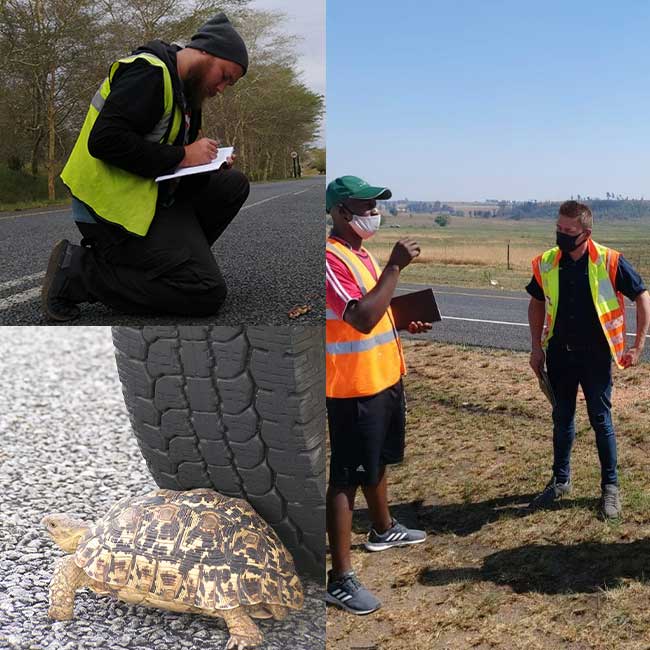
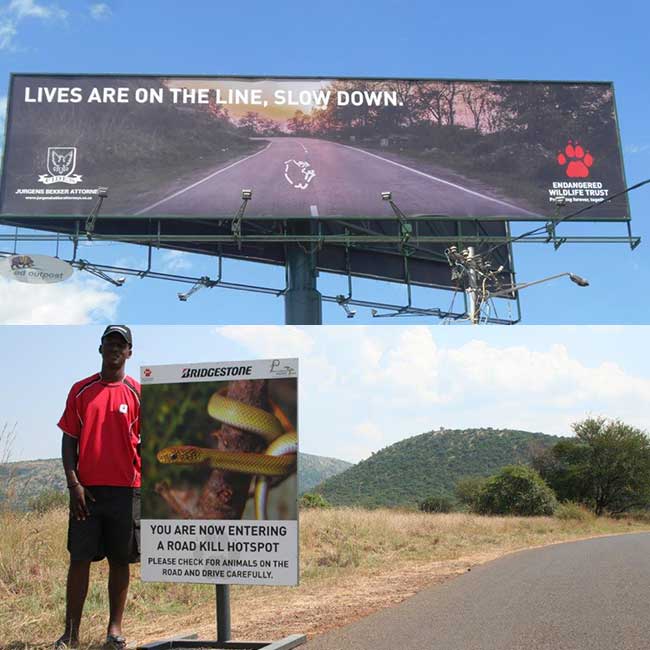
Wildlife and Roads
Roadwatch
In 2013, the EWT launched several national campaigns to encourage members of the public to submit roadkill sightings. We launched a smartphone application (app ) called “RoadWatch” – one of the first roadkill reporting apps in the world. To date, almost 30,000 data points have been reported via the app. This data is critical to building our knowledge base and ensuring we receive records from areas we don’t travel to or cannot easily access.
Roads in Parks Project
Following our awareness campaigns, we received feedback from the public about their concern over the rate of roadkill incidents in the country’s National Parks. These are predominantly related to speeding and careless driving. South Africa’s protected areas are havens for wildlife, but they are still at risk from road users. We have previously worked with South African National Parks (SANParks) to reduce roadkill in parks by influencing driver behaviour.
Stories of success for the wildllife and transport programme
Wildlife and Rail
The EWT in 2021 and 2022 worked to understand the negative impacts of a railway line running through the Balule Nature Reserve in the Greater Kruger National Park (GKNP) on wildlife. This railway line extends over 45 km from Hoedspruit to Phalaborwa and poses a significant threat to local wildlife populations. Our Wits University MSc student Hannah de Villiers completed this study with support from Transnet and Transforntier Africa in 2023. Since 2011, over 500 fatal wildlife-train collisions have occurred on the railway line, involving Black Rhinoceros (Diceros bicornis), White-backed Vulture (Gyps africanus), African Wild Dog (Lycaon pictus), Hippopotamus (Hippopotamus amphibious), Cheetah (Acinonyx jubatus), Lions (Panthera leo), giraffes (Giraffa camelopardalis), and African Elephants (Loxodonta africana).
Through this initiative we identified hotspots and other factors contributing to high rail-kill rates by gathering baseline rail-kill data. This research will indicate whether constructing additional underpasses and fencing to divert animals through the underpasses would effectively reduce rail-kill.
South African students on track
In Balule Nature Reserve, research has provided a baseline indicating there could be over 1,000 vertebrates killed annually along the existing railway line. Cameras recording wildlife movement in underpasses capture an average of 80,000 images a month, recording Leopards, lions, Spotted Hyaenas, Cape Porcupines, Common Duikers, and Honey Badgers using the underpasses. This valuable data demonstrates which animals use the underpasses frequently, when they do so, and under what conditions. This is an important step towards being able to recommend tested and targeted rail-kill reduction options to rail operators.
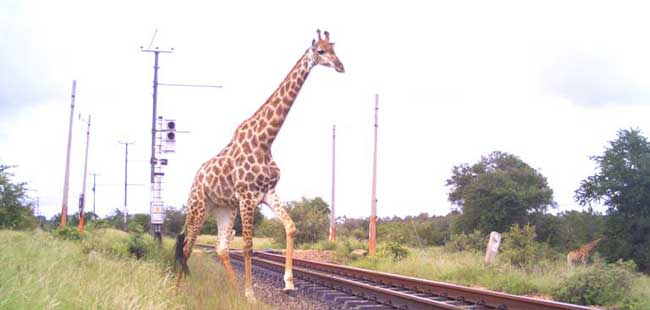
How you can help wildlife threatened by transport infrastructure
Submit roadkill reports and photographs to the EWT. Please specify the location of the roadkill (preferably GPS coordinates), the species, and the date you saw it. Email your reports here or download the RoadWatch App from the Google Play Store. These reports help us develop road sensitivity maps that road agencies and environmental planners can use when developing transport corridors. The reports also support us when we motivate for appropriate mitigation measures to be implemented and, ultimately, reduce the impacts of transport on our wildlife.
Reducing the toll of roads on wildlife
The EWT and the N3 Toll Concessionaire (N3TC) trialed two roadkill-reduction methods on the N3. The first was temporary roadside fencing directing wildlife to cross safely through underpasses. We installed cameras in four underpasses to monitor whether wildlife used them and were excited to see that several mammals did. This includes Serval (Leptailurus serval), the most common animal killed on the N3. These results indicate that underpasses are a promising alternative for wildlife crossing in this highway and other roads across the country. The wildlife underpass crossing project was expanded in 2023 to include the Trans African Concessions (TRAC N4), where six underpass structures are being monitored by camera traps for wildlife use. From these six, two of the underpasses have temporary road-verge fencing that direct animals towards the nearby underpass crossing. Preliminary results indicated increasing animal activity and the use of underpass structures, with more mammal species appearing to use the structures that are retrofitted with mesh fencing; these include Serval (Leptailurus serval), Southern Reedbuck, (Redunca arundinum), Cape Clawless Otter (Aonyx capensis) and Honey Badger (Mellivora capensis). When more animals use the underpass structures to cross the highway, animal activity adjacent to the road is reduced;, hence, reducing collisions whilst improving road safety.
Owls and other birds of prey use road structures such as signboards and safety barriers to perch on while hunting prey, such as rodents and squirrels. Unfortunately, doing so places the birds at risk of vehicle collisions when they land on the road to feed. The second roadkill-reduction method we tested was placing owl perches 100 m from the road to encourage owls to use these as safer alternatives and to reduce hunts on the roads. Cameras on the owl perches have recorded several birds of prey species using the installed perches for feeding or perching. This includes African grass, barn and spotted eagle owls. Our findings showed that the more owls use the installed structures for hunting and feeding, their activity on the road vicinity is reduced. For this reason, we recommend providing alternative structures similar to those on roadsides to reduce the time birds spend on or near roads, as well as their chances of being struck by vehicles. See images captured and read more here.
